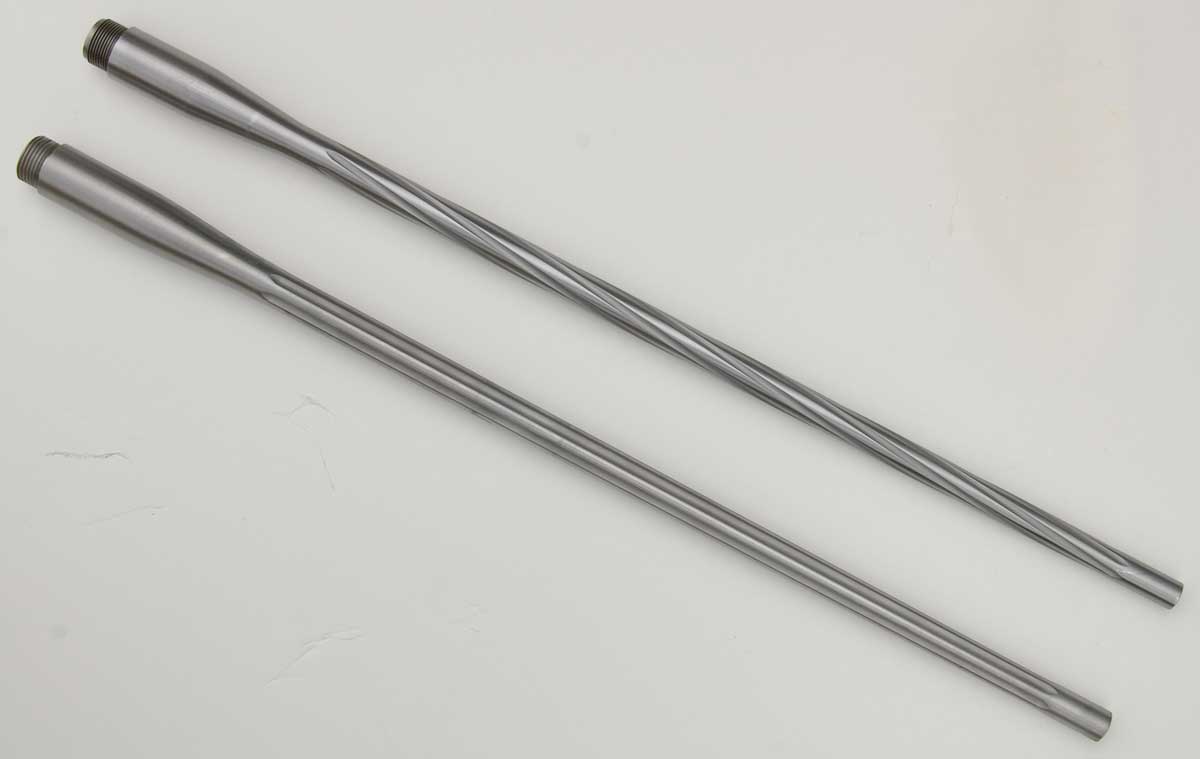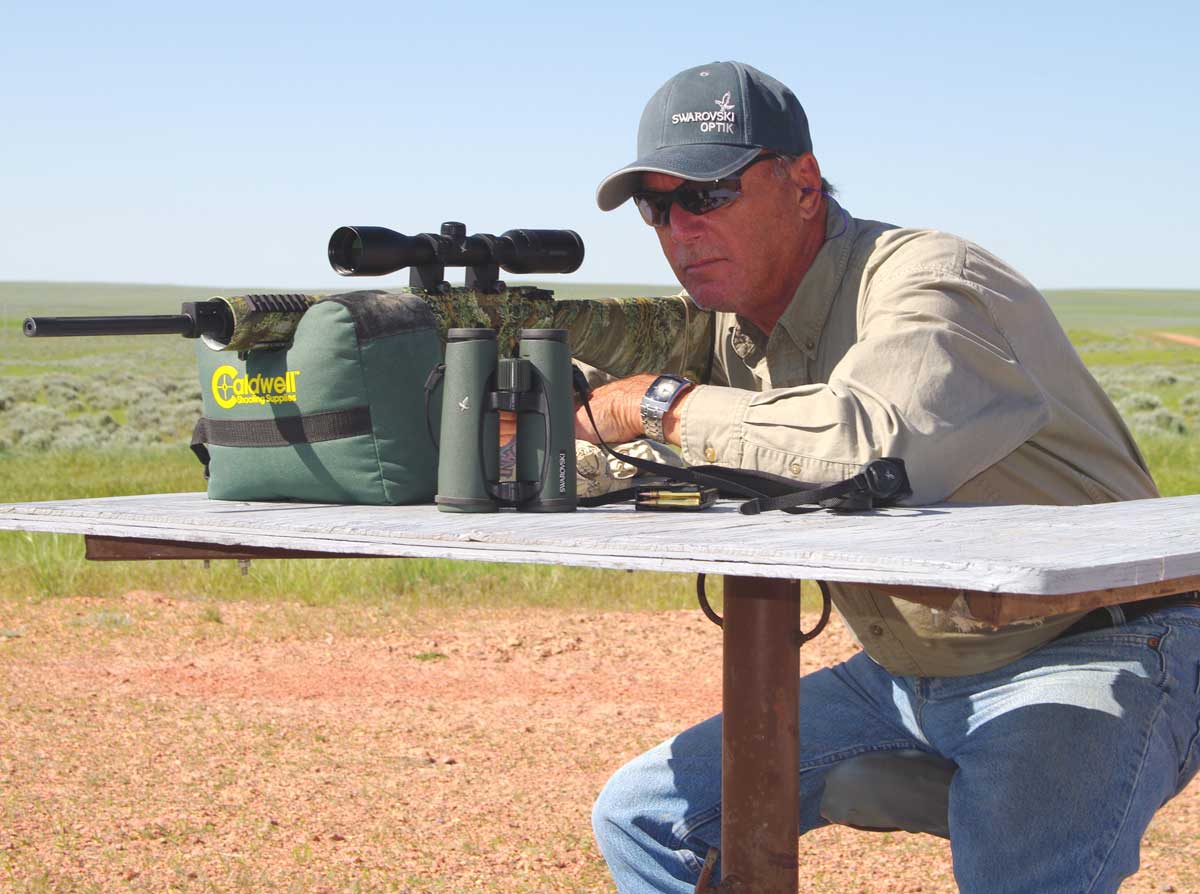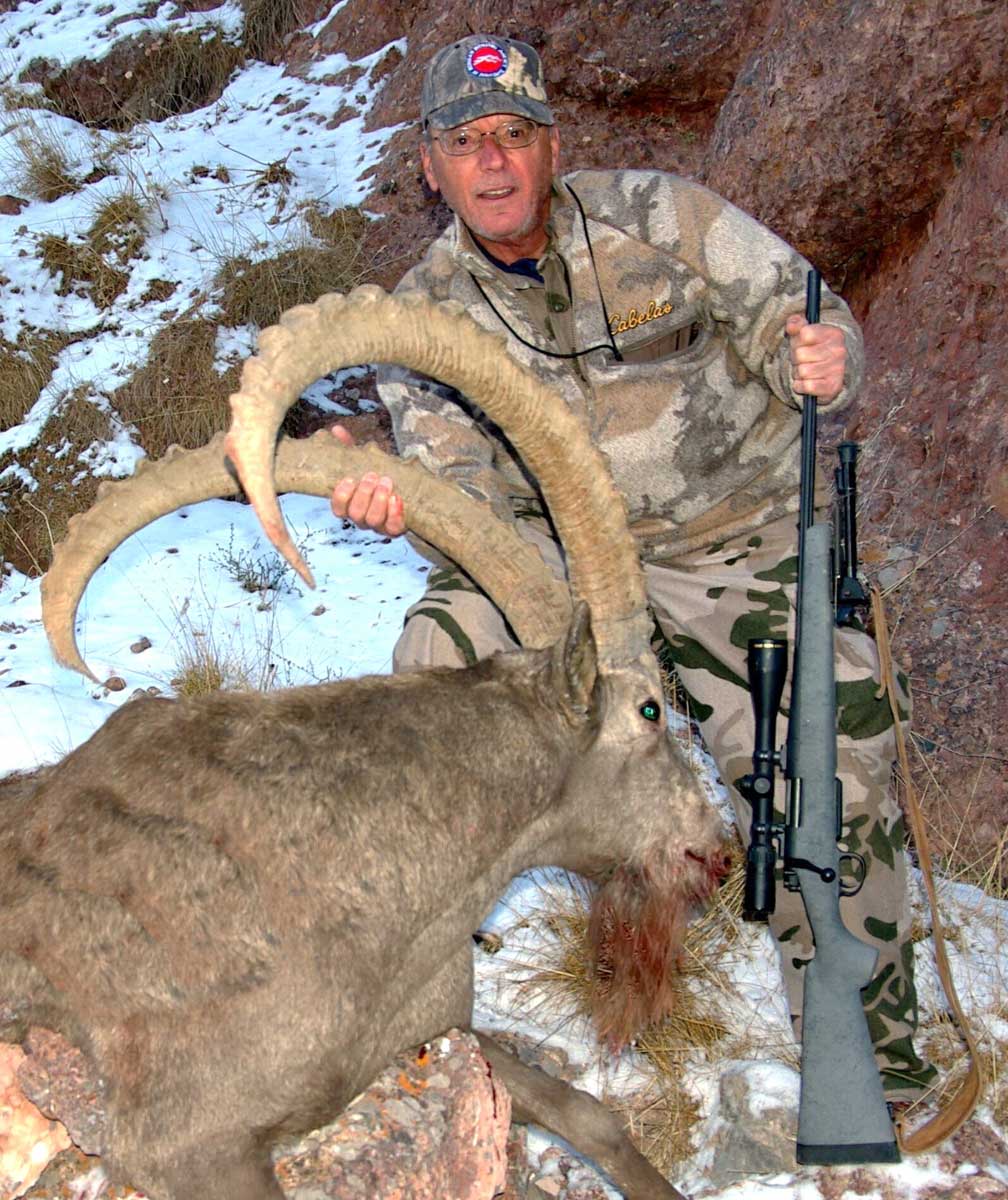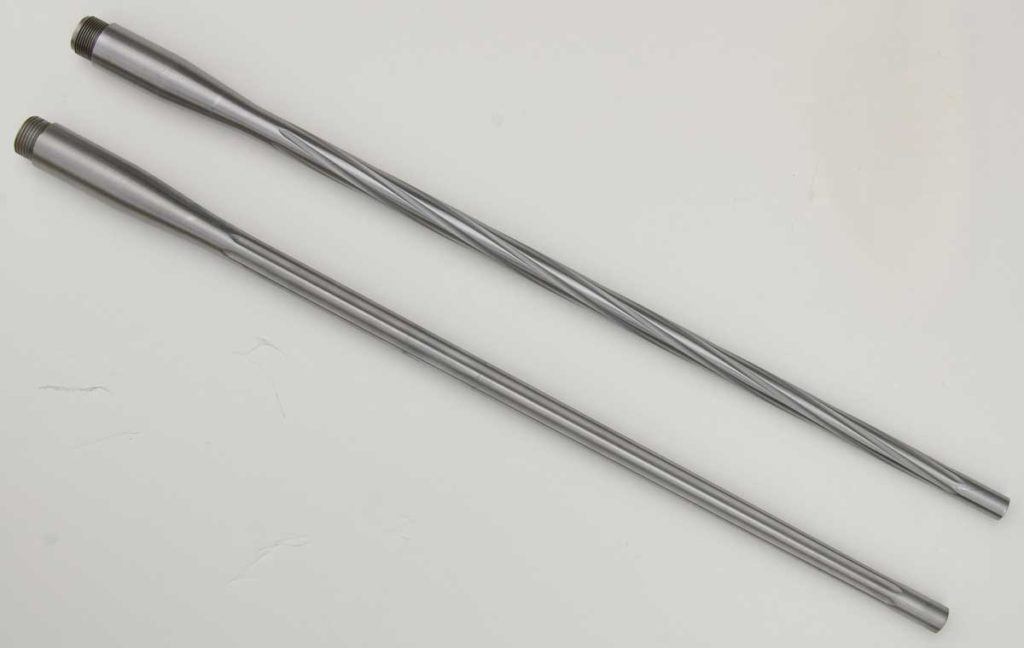To flute or not to flute, that is the question.

The Bard didn’t have to grapple with that option back in the 17th century, but today’s hunters do. Without question fluted barrels are “in” and it’s been that way for well over a decade now. It’s really quite amazing because it’s an option that adds substantially to the cost of a barrel, particularly with semi-production rifles and those wearing custom spouts.
Of course, with production rifles, the added cost is built into the price, but if you’re buying or having a custom barrel fitted to an action, the added cost of fluting is right there in black and white. As to how much straight fluting (as opposed to spiral fluting), adds to the cost of a barrel, I checked with three well known barrel makers, Pac-Nor, Shaw Barrels and H-S Precision.
Pac-Nor is strictly a barrel maker, whereas Shaw and H-S also produce complete rifles. Anyway, the average these companies charge for a straight-fluted barrel works out to $130 more than for an un-fluted barrel of the same specs. And Shaw, who owns patents on spiral fluting, gets another $30, or $160 for that distinctive option; one that I’ve heard jokingly described as “it looks like rifling on the outside.”
Whenever you see a spiral-fluted barrel then, it’s either a Shaw barrel, or the maker is paying a royalty. Being the largest independent manufacturer of gun barrels for OEMs, the gunsmithing trade and consumers alike, I asked Shaw’s CEO, Carl Behling, Jr., what percentage of custom barrel and custom rifle sales specify fluting of either type. I was absolutely floored when he said, “about 60 percent!” I mean we’re talking around 75 percent more than for a smooth barrel! I would never have guessed it was anywhere near that high a percentage.
I’ve yet to meet anyone who doesn’t think fluting is attractive, for there’s no denying it lends a distinctive look to any rifle, particularly on raw stainless barrels where the flutes are blackened; a feature I believe Weatherby pioneered. To achieve that look the completely finished and fluted barrel is blackened, then a final polish is applied to the outside diameter surface, which leaves a silver barrel with contrasting black flutes.
I’m just guessing now, but I believe most hunters who opt for a fluted barrel do so primarily for cosmetic reasons; it just looks cool! But of course, there are also functional aspects to fluting, the most obvious of which is that it reduces weight.
The degree to which weight can be shaved varies with the length, number, width and depth of the flutes. Generally speaking, six is the normal number, and their length is dictated by the straight-taper portion of the barrel beginning about an inch in front of the point where the straight taper begins, and ends about the same distance from the muzzle. The wider and deeper the grooves, the more weight is saved, but the depth is obviously limited by what’s considered a safe barrel wall thickness as measured between the bottom of the grooves and the bore itself.

As to how much weight can be saved, Pac-Nor’s comprehensive website provides us with the answer, for it lists the actual weight savings for each barrel contour. Let’s take their #3 barrel in 7mm, which represents the average spout on a typical sporter weight production rifle in a magnum caliber. It measures 24” long and .625” at the muzzle. Un-fluted, this barrel weighs 3.51 pounds, fluted, it weighs 2.74 pounds or nearly 14 ounces less. That’s a savings of 23 percent, which is pretty significant. The only other component that can affect rifle weight to that degree is the stock.
Okay, so fluting saves weight. What else is claimed for it? Faster heat dissipation, that’s what. Because fluting exposes more surface area, hence less mass to retain heat, it cools faster than an identical un-fluted barrel. It follows then that it must also heat up faster, no?
In the military context, barrel heating from automatic fire is of some concern. Of less concern are the 10-shot strings required in rapid fire competition, and prairie dog shooting where on a good rat town you can easily get a barrel to 3rd degree burn temperature.
As everyone knows, the hotter a barrel gets, the more it has a tendency to open groups and/or change point of impact (POI). But on a hunting rifle, erratic grouping due to excessive barrel heat is something we need not concern ourselves with.
What about the claim that spiral fluting is more efficient than straight fluting when it comes to dissipating heat? That also is true, but we’re really splitting hairs! It’s more efficient because over a given lineal distance a spiral flute will measure slightly longer than a straight one, i.e., more surface area. How much longer? On a typical 24” barrel, a 16-1/2” straight flute, if spiraled, would measure about 17”. In other words, more surface area within a given length. Like I said, splitting hairs.

Okay, so we know that fluting lightens a barrel and allows it to cool faster. Is there anything else it’s supposed to do? Well, yes; it’s supposed to make a barrel stiffer, at least that’s the general consensus. But does it? I myself used to think that was true because to not think so seemed counterintuitive. For example, if you were to crease a sheet of paper to where it formed a V, then hold it by the crease at either end, the entire sheet will stick straight out. Without the crease it would simply go limp. An even better example is a metal tape measure. Because the tape is dished (fluted), you can extend it several feet from the housing before it “breaks” and falls. Like I said, to not think fluting stiffens a barrel is just plain counter intuitive.
It was many years ago that I first put those thoughts into one of my articles, only to receive several letters from engineers essentially telling me that when you remove material from an object, you weaken it. In short, if you flute a barrel, it will be less stiff than before. A friend and colleague of mine, John Dustin, who is a well-known accuracy gunsmith, competitive Benchrest shooter and writer, devised a simple demonstration.
John took a 6.5mm fully contoured sporter-weight barrel and locked the unthreaded chamber end in a lathe chuck. Setting a dial indicator against the muzzle at .000”, he then hung a 10-lb. weight two inches behind the muzzle and measured the deflection; it was .030”. He then fluted the barrel and repeated the procedure, using the same torque values for locking the chuck, and hanging the weight at precisely the same place on the barrel as before. It now registered a .040” deflection, or 25 percent more.
Bottom line: A fluted barrel is lighter than an un-fluted one of identical length and contour, so it’s certainly a plus in a hunting rifle if weight is a concern. As for the heating/cooling aspects, as I see it, it’s totally academic in a game rifle. So, is the 70 or so percent higher cost worth it? Hell yes; it looks cool!–Jon R. Sundra

